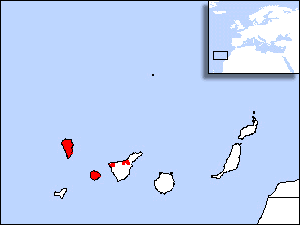
White-tailed
Columba junoniae
|
Justification This species has a small, severely
fragmented population. Although precise data are lacking, continuing
declines are likely as a result of high levels of nest-predation. This
combination of factors qualify the species as Vulnerable. |
|
|
|
Threats On |
|
Conservation It is fully protected under Spanish
law. Many protected areas have been established, including |
|
Targets *Conduct a census and initiate
monitoring. *Investigate factors affecting breeding performance. *Purchase
important sites. *Promote the restoration of laurel forest. *Avoid further
damage to laurel forest from commercial forestry. *Implement alternatives
to commercial forestry. *Control illegal hunting. |
Use Your Browser's Back Button to return to the Previous Page